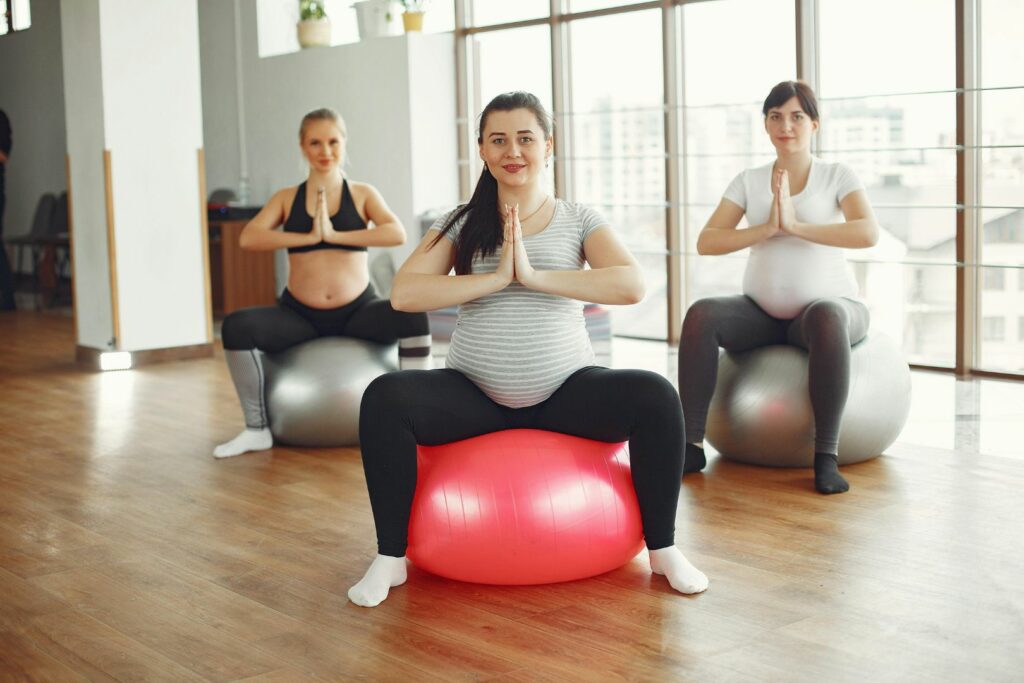
Are Pregnancy workouts a good idea? yes, but how?
Your happy event is coming soon, and you’re wondering if you can continue (or start) exercising? Wanting to stay active and fit despite the appearance of a little belly, many women ask themselves this question. So, are there any pregnancy workouts out there and should you do them? Well, the answer is clear: YES… BUT! , it all depends on the workout and your condition. A suitable physical activity will indeed be beneficial and therefore to be favored. But other sports, on the contrary, are to be avoided to preserve, among other things, your pelvic floor.
The Benefits of working out during pregnancy
Generally speaking, practicing a physical activity is beneficial for all women. But what about exercising while pregnant?

Contrary to popular belief, healthcare professionals completely recommend exercising during pregnancy. The benefits of physical activity while baby is growing in the belly are actually numerous. Both for the baby and mom.
Here are some of them:
- Control and limit weight gain: Staying active helps maintain muscle mass and prevent unnecessary fat storage during pregnancy. In addition to being beneficial for overall health, strength training and cardio will also make childbirth easier, which is a physical challenge in itself! And, of course, the new mother will have fewer pregnancy-related pounds to lose afterwards.
- Reduce lower back pain: During pregnancy, morphological changes very often cause back pain. Certain pregnancy workouts can help relieve these almost inevitable pains.
- Reduce the risk of developing gestational diabetes: This type of diabetes affects between 3% to 20% of pregnant women. It manifests as an increase in blood sugar levels towards the end of the second and in the third trimester.
- Improve blood circulation: This helps reduce problems such as heavy legs, edema, hemorrhoids, varicose veins, etc.
- Maintain a positive mood: It is proven that regular physical activity releases plenty of positive hormones (serotonin, endorphins, and dopamine). Whether you are enjoying your pregnancy or not, exercise will help you stay in good spirits.

What kind of workouts can women do during pregnancy?
It is important to keep your body in shape during, and after, pregnancy. But which activities should be favored?
Ask for Doctor’s Approval before starting workout during pregnancy
First, research shows that generally, exercising does not increase the risk of miscarriage. On the contrary, it allows the mother to stay in better shape and good health. Moreover, if you were used to exercising before your pregnancy, continuing during it will present even less risks.
However, you should always get approval from your doctor before exercising while pregnant. From the beginning of pregnancy and at each appointment, ask for the approval of your midwife or your gynecologist. Indeed, your abilities and risks are likely to evolve during the pregnancy.
For instance, if you are at high risk of premature delivery from 6 months onwards, you may be prohibited from any physical activity.
Safe pregnancy workouts
Next, it is important to choose a physical activity that corresponds to your level and stage of pregnancy.
To preserve the health of both the mother and the baby, it is recommended to engage in ‘gentle’ pregnancy workouts. These are activities with low to moderate intensity, without impact, blows, or risk of falling.
For example, gentle gymnastics, walking, swimming, or even yoga are perfect options.

These pregnancy safe workouts will improve oxygen capacity and body flexibility, while gently maintaining muscle mass. They also allow the (future) mother to relax during and after pregnancy.
If you do not have any particular health problems, here are the recommendations for a pregnancy workout session: 30 minutes, 3 times a week. Of course, this should be adjusted according to the progression of the pregnancy.
Workout and Sports to avoid during pregnancy
On the other hand, certain sports and workouts should be avoided during pregnancy. Either because they involve risks of falling, blows, or impacts, or because they limit the oxygenation of the fetus. These traumatic risks could have more or less serious consequences for the baby.
Here are some examples of activities to avoid:
- Contact sports
- Diving and horse riding are not recommended
The golden rule: listen to your body
Above all, it is essential to listen to your body and adjust your practice accordingly. Throughout the months of pregnancy, your abilities will evolve. Sometimes, you may even notice variations from one day to another.
Thus, you may be able to complete a session one day and feel too exhausted for the next 3 days. Then, you will regain your energy the following week. This is to be expected when you workout during pregnancy! The most important thing is to adapt the frequency and intensity of your workout sessions according to how you feel.
Your priority should always be your well-being. During and just after your pregnancy, focus your physical activity on enjoyment rather than performance.

what about working out right after pregnancy?
After pregnancy and childbirth, a woman’s body has undergone significant changes. It is normal to want to get back in shape to live well after childbirth. However, it is important to be patient: for 9 months, the body carried a child. It will therefore need at least as much time to recover from this experience.
First, undergo your pelvic floor training and abdominal. This will help you re-tone all the muscles that support your trunk in your daily life and during exercise. Urinary leaks, organ prolapse, back pain, etc. Skipping this key step could have terrible repercussions on your postpartum recovery…
Therefore, take your pelvic floor training seriously, at least 6 weeks after childbirth. Once this step is completed, you can then resume physical activity… adapted, of course! You will need to start slowly, gradually increasing the intensity.

Free Pelvic floor guide
Find out how to strengthen your pelvic floor to prevent bladder weakness and improve intimate pleasure! 💥

